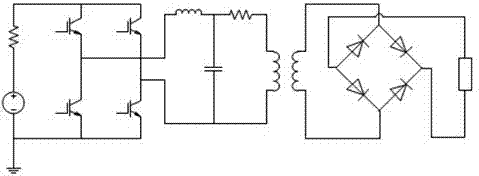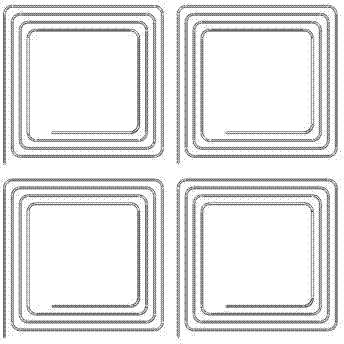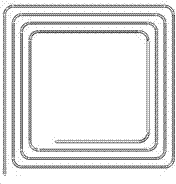Wireless magnetic-resonance charging device based on array coils
A technology of wireless charging and array coils, applied in circuit devices, electrical components, electromagnetic wave systems, etc., can solve the problems of reduced radiation, low transmission efficiency, and large surrounding radiation, and achieve flexible adjustment, high-efficiency transmission, and uniform electromagnetic field distribution.
- Summary
- Abstract
- Description
- Claims
- Application Information
AI Technical Summary
Problems solved by technology
Method used
Image
Examples
Embodiment
[0027] The present invention discloses several array coil structures for magnetic resonance long-distance wireless charging, and the present invention will be further described below in conjunction with the proposed structures. The transmitting end is a coil sequence unit composed of identical coils, and an alternating magnetic field is generated by applying a high-frequency alternating current to the transmitting coil. The receiver coil is the same coil as one of the transmitter coil trains and receives the transferred energy via an alternating magnetic field and transmits it to the load. Current and voltage feedback and controllers can be introduced into the above system to improve the efficiency of power transfer between the transmitter and receiver.
[0028] The coils are arranged in an array to maximize the use of the area of the transmitting coil. The magnetic flux distribution in space between the transmitting end and the receiving end is uniform. In addition, each ...
Embodiment 2
[0034] Figure 3a is the transmitting end of the triangular helical three-coil array, Figure 3b It is the receiving end of a single triangular helical coil. Others are the same as those in the embodiment, and will not be repeated here.
Embodiment 3
[0036] Figure 4a It is the transmitting end of the circular helical six-coil array, Figure 4b It is the receiving end of a single circular helical coil. Others are the same as those in the embodiment, and will not be repeated here.
PUM
 Login to View More
Login to View More Abstract
Description
Claims
Application Information
 Login to View More
Login to View More - R&D
- Intellectual Property
- Life Sciences
- Materials
- Tech Scout
- Unparalleled Data Quality
- Higher Quality Content
- 60% Fewer Hallucinations
Browse by: Latest US Patents, China's latest patents, Technical Efficacy Thesaurus, Application Domain, Technology Topic, Popular Technical Reports.
© 2025 PatSnap. All rights reserved.Legal|Privacy policy|Modern Slavery Act Transparency Statement|Sitemap|About US| Contact US: help@patsnap.com



